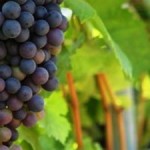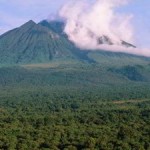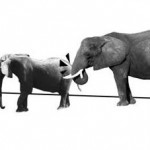OAKLAND, CA, An ecotourism village developed by former gorilla poachers. Honey harvesters and tea farmers no longer destroying the forest. Traditional medicinal plants grown by doctors for healing. These are some of the extraordinary green feats Rwanda has on display in “Millions of Pieces, Only One Puzzle,” a new online photography exhibition created for World Environment Day 2010 to explore the critical connections between humans and biodiversity.
The show was produced by the nonprofit group Art Works for Change, who invited the Venezuelan photographer-biologist Antonio Briceño to photograph the people and land of Rwanda, the host country for this year’s World Environment Day (WED), celebrated annually on June 5. It features 10 diptychs pairing the stories of individuals with the land upon which they rely for their sustenance and well-being. This fits into the WED theme this year of “Many Species. One Planet. One Future,” which focuses on the central importance to humanity of the globe’s wealth of species and ecosystems, according to the United Nations Environment Programme (UNEP) who produces the annual event.
Briceño was selected for his deep appreciation of indigenous populations, says Randy Jayne Rosenberg, executive director and chief curator for Art Works for Change. “He has recorded the images and stories of the Maori in New Zealand, shaman in South America, the Sami in Finland, and other people around the world, helping connect their stories to the larger puzzle of humanity.”
Among the stories Briceño tells in both words and pictures are those of John Bosco Ukurikiyeyezu, the head of a cooperative seeking to find alternatives to deforestation in order to save honey harvesting; Jeannete Uwineza, who gathers her family’s daily supply of water at a public fountain amid growing water stress; and Alphonse Nsengiyumva, who is part of an effort to use wildlife tourism as a means of protecting forests and the creatures that reside there.
“This work pays homage to the people of Rwanda,” says Briceño. “Despite its dramatic history and the many problems it faces, the country is investing in a green economy where they are confident that respect for and preservation of nature will provide for the best health and wealth of its population. We cheer Rwanda on as an example to the rest of the world.”
“Millions of Pieces, Only One Puzzle” launches June 1 on the UNEP and Art Works for Change websites, and is also being featured by the U.S. business magazine Fast Company <http://www.fastcompany.com/>. In 2011, it will join with additional artworks to form the exhibition “Nature’s Toolbox: Biodiversity, Art & Invention,” which will tour museums internationally for two to three years.
The exhibition was made possible with support from SC Johnson & Son and Contour Global. Both companies have a strong presence in the Rwandan and greater African community: SC Johnson is working to sustainably source Pyrethrum, extracted from dried chrysanthemum flowers, for use in its pest control products, while also supporting base of the pyramid economic growth; and ContourGlobal, leading the effort in their innovative Lake Kivu project, harvesting its natural resources which will generate low cost electricity for use in Rwanda and the wider region and permit the Government of Rwanda to bring affordable electricity to millions of its citizens while improving the environment.
Art Works for Change, based in Oakland, California, produces contemporary art exhibitions to address social and environmental issues. It uses the transformative power of art as a vehicle to promote dialogue and awareness, inspire action and thought, and address systems for social change. It uses the storytelling power of art to raise awareness and foster learning opportunities among a diverse population.












